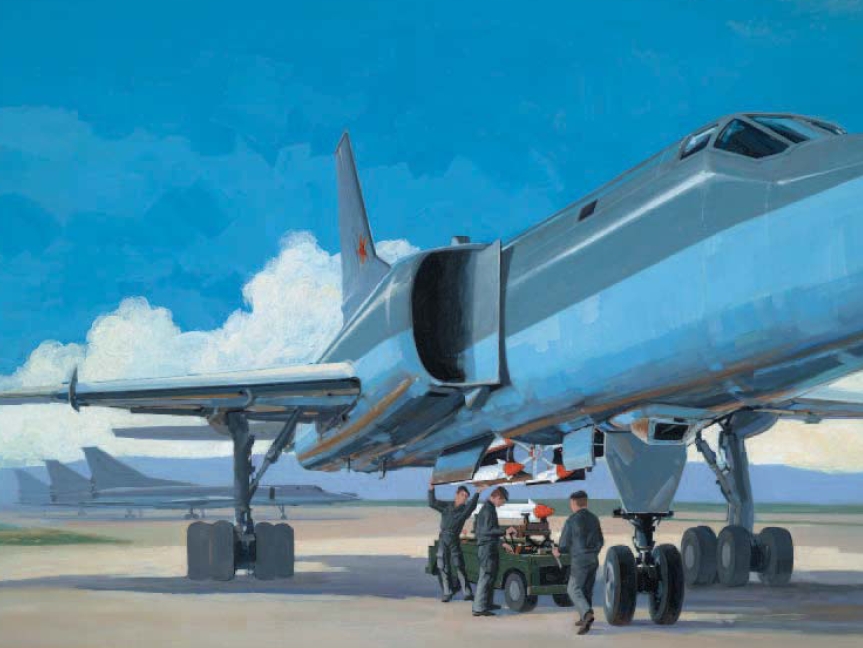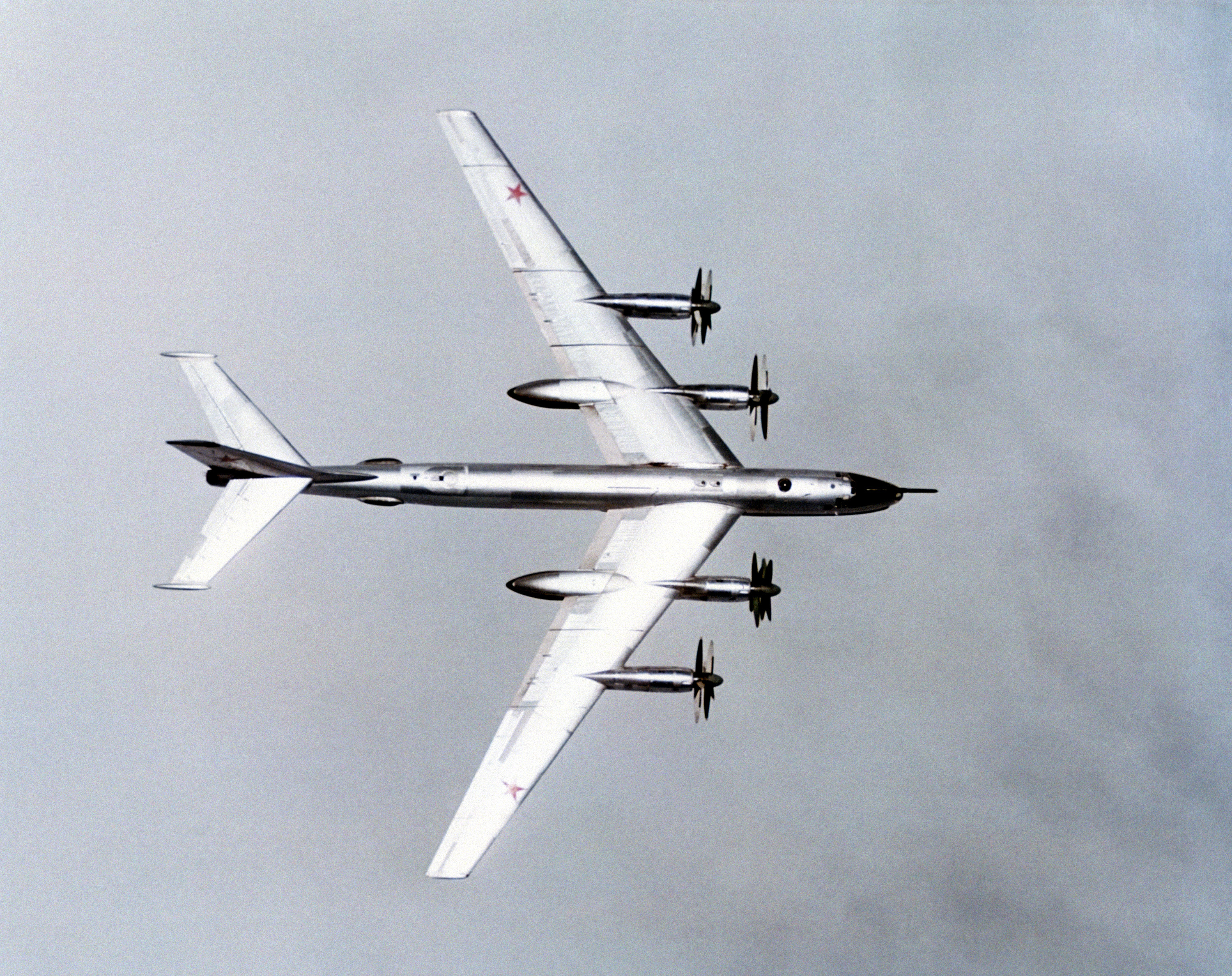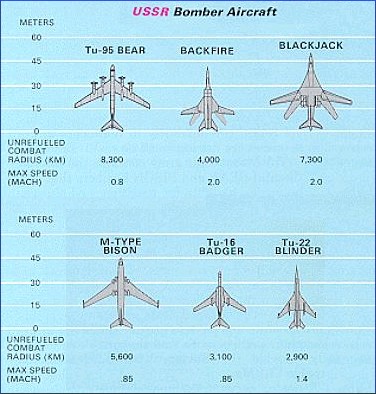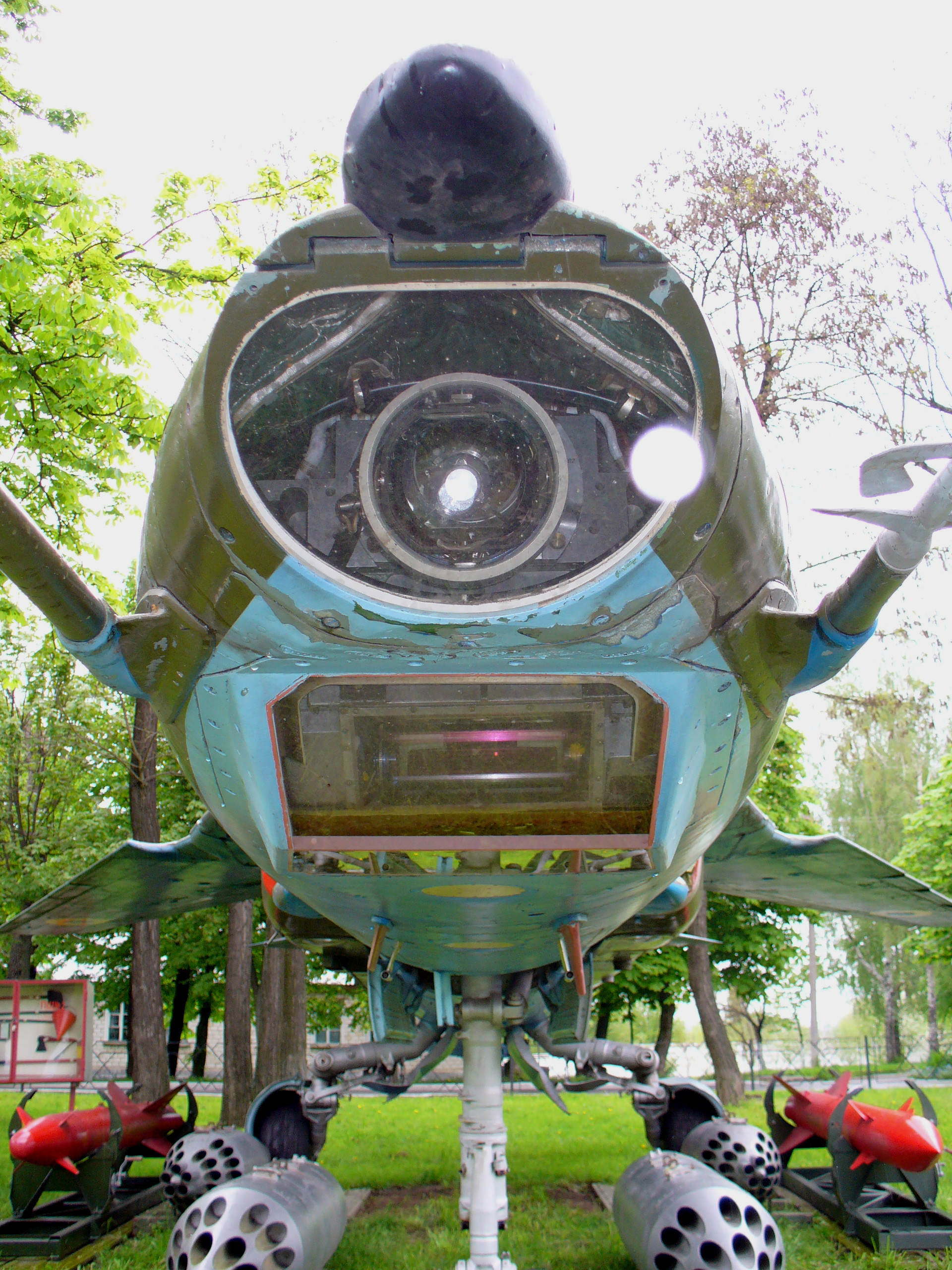|
Olenya
Olenya (also Olenegorsk) is a major Russian Navy reconnaissance base, located on the Kola Peninsula 92 km south of Murmansk. As of 2020, units at the base were subordinate to the Long-Range Aviation branch of the Russian Aerospace Forces. The base and its staff settlement ( Vysoky, Murmansk Oblast), across Lake Permusozero from the city of Olenegorsk, are served by the Olenegorsk rail station (formerly Olenya station). Olenya has served as the headquarters for five MRAD (Naval Reconnaissance Air Division), and has hosted two reconnaissance regiments. Its 3500-meter runway is the longest on the Kola Peninsula, making it a key facility for intercontinental flights across the North Atlantic basin. The base is home to the 40th Composite Aviation Regiment as part of the 22nd Guards Heavy Bomber Aviation Division. History Olenya was first detected by US intelligence in 1957, and was listed as having a runway length of 3350 m (11,000 ft). The base served as a forward ... [...More Info...] [...Related Items...] OR: [Wikipedia] [Google] [Baidu] |
Olenegorsk, Murmansk Oblast
Olenegorsk (, lit. ''reindeer mountain'') is a town in Murmansk Oblast, Russia, located north of the Arctic Circle, south of Murmansk. Population: 25,166 ( 2002 Census); History The railway station of Olenya () was opened in 1916, with the construction of the Murman Railway. The station facilities, and the small settlement associated with the station were located to the east of the railroad. Their importance was somewhat increased in the 1930s, as Olenya became a junction for the railway branch to the newly built town of Monchegorsk some to the southwest. In 1949, work started on the iron ore strip mines and ore-processing facilities a few kilometers to the west of the Olenya station. At the same time, construction of a company town, originally also named Olenya, started between the rail station and the mines, to the west of the railway. In December 1949, it was granted work settlement status. By the March 27, 1957 Decree of the Presidium of the Supreme Soviet of ... [...More Info...] [...Related Items...] OR: [Wikipedia] [Google] [Baidu] |
Tupolev Tu-22M
The Tupolev Tu-22M (; NATO reporting name: Backfire) is a supersonic, variable-sweep wing, long-range strategic and maritime strike bomber developed by the Tupolev, Tupolev Design Bureau in the 1960s. The bomber was reported as being designated Tu-26 by Western intelligence at one time. During the Cold War, the Tu-22M was operated by the Soviet Air Forces (VVS) in a missile carrier strategic bombing role, and by the Soviet Naval Aviation (''Aviatsiya Voyenno-Morskogo Flota'', AVMF) in a long-range maritime anti-shipping role. In 2024, the Russian Air Force had 57 aircraft in service, according to the 2024 Military Balance report by International Institute for Strategic Studies. However, in 2023, Ukraine's Main Directorate of Intelligence (Ukraine), Main Directorate of Intelligence estimated that Russia had only 27 aircraft in operable condition. Development In 1962, after the introduction of the Tupolev Tu-22, it became increasingly clear that the aircraft was inadequate in i ... [...More Info...] [...Related Items...] OR: [Wikipedia] [Google] [Baidu] |
Tupolev Tu-95
The Tupolev Tu-95 (; NATO reporting name: "Bear") is a large, four-engine turboprop-powered strategic bomber and missile platform. Maiden flight, First flown in 1952, the Tu-95 entered service with the Soviet Long Range Aviation, Long-Range Aviation of the Soviet Air Forces in 1956 and was first used in combat in 2015. It is expected to serve the Russian Aerospace Forces until at least 2040. A development of the bomber for maritime patrol is designated the Tupolev Tu-142, Tu-142, while a airliner, passenger airliner derivative was called the Tupolev Tu-114, Tu-114. The aircraft has four Kuznetsov NK-12 engines with contra-rotating propellers. It is the only turboprop-powered strategic bomber still in operational use today. The Tu-95 is one of the loudest military aircraft, particularly because the tips of the propeller blades move faster than the speed of sound. Its distinctive swept wing, swept-back wings are set at an angle of 35°. The Tu-95 is the only propeller-driven aircr ... [...More Info...] [...Related Items...] OR: [Wikipedia] [Google] [Baidu] |
Tu-95
The Tupolev Tu-95 (; NATO reporting name: "Bear") is a large, four-engine turboprop-powered strategic bomber and missile platform. First flown in 1952, the Tu-95 entered service with the Long-Range Aviation of the Soviet Air Forces in 1956 and was first used in combat in 2015. It is expected to serve the Russian Aerospace Forces until at least 2040. A development of the bomber for maritime patrol is designated the Tu-142, while a passenger airliner derivative was called the Tu-114. The aircraft has four Kuznetsov NK-12 engines with contra-rotating propellers. It is the only turboprop-powered strategic bomber still in operational use today. The Tu-95 is one of the loudest military aircraft, particularly because the tips of the propeller blades move faster than the speed of sound. Its distinctive swept-back wings are set at an angle of 35°. The Tu-95 is the only propeller-driven aircraft with swept wings built in large numbers. Design and development The design bur ... [...More Info...] [...Related Items...] OR: [Wikipedia] [Google] [Baidu] |
Tupolev Tu-114
The Tupolev Tu-114 Rossiya (; NATO reporting name Cleat) is a retired large turboprop-powered long-range airliner designed by the Tupolev design bureau and built in the Soviet Union from May 1955. The aircraft was the largest and fastest passenger plane at that time and also had the longest range, at 10,900 km (6,800 mi). It has held the official title of fastest propeller-driven aircraft since 1960."FAI official database" ''''. Retrieved: 5 September 2007. Due to its |
Olenegorsk Radar Station
Olenegorsk Radar Station (also described as Olenegorsk-1 () or Murmansk) is the site of a Soviet and Russian early warning radar. It is located near Olenegorsk on the Kola Peninsula, north of the Arctic Circle in north west Russia. It is considered to be a key part of the Russian early warning system against ballistic missile attack, and provides coverage of ballistic missile launches in the Norwegian Sea and North Sea. The station is operated by the Russian Space Forces. The military townlet for the station is called Olenegorsk-1 and is at the village of Protoki (). The station is east of Olenya airbase and east of Olenegorsk. to the south east there was a military tropospheric scatter radio relay station. Radar Olenegorsk was the site of one of the first two early warning radars in the Soviet Union, the other being at Skrunda-1. The Dnestr-M radar ( NATO codename: "Hen House") was started in 1963 and completed in 1969, entering service in 1971. A Daugava radar (NATO ... [...More Info...] [...Related Items...] OR: [Wikipedia] [Google] [Baidu] |
Russian Long Range Aviation
Russian Long Range Aviation (, literally ''Aviation of Distant Action'' and abbreviated DA) is a sub-branch of the Russian Air Forces responsible for delivering long-range nuclear or conventional strikes by aircraft (rather than missiles). The Russian Long Range Aviation and now-dissolved Ukrainian Long Range Aviation were both previously part of the Soviet Air Forces The Soviet Air Forces (, VVS SSSR; literally "Military Air Forces of the Union of Soviet Socialist Republics"; initialism VVS, sometimes referred to as the "Red Air Force") were one of the air forces of the Soviet Union. The other was the Sovie ..., before it was split into the Air Forces of its many successor states, most notably the Russian Air Force and Ukrainian Air Force. Those branches were tasked with strategic bombing, long-range bombardment of strategic targets with nuclear weapon, nuclear weapons. History With the dissolution of the Soviet Union, Long-Range Aviation in Russia entered a period of declin ... [...More Info...] [...Related Items...] OR: [Wikipedia] [Google] [Baidu] |
Tsar Bomba
The Tsar Bomba (code name: ''Ivan'' or ''Vanya''), also known by the alphanumerical designation "AN602", was a Thermonuclear weapon, thermonuclear aerial bomb, and by far the most powerful nuclear weapon ever created and tested. The Soviet physicist Andrei Sakharov oversaw the project at Arzamas-16, while the main work of design was by Sakharov, Viktor Adamsky, Yuri Babayev, , and Yuri Trutnev (scientist), Yuri Trutnev. The project was ordered by General Secretary of the Communist Party, First Secretary of the Communist Party Nikita Khrushchev in July 1961 as part of the Soviet resumption of nuclear testing after the Partial Nuclear Test Ban Treaty#Khrushchev and a moratorium: 1958–1961, Test Ban Moratorium, with the detonation timed to coincide with the 22nd Congress of the Communist Party of the Soviet Union (CPSU). Tested on 30 October 1961, the test verified new design principles for high-yield thermonuclear charges, allowing, as its final report put it, the design o ... [...More Info...] [...Related Items...] OR: [Wikipedia] [Google] [Baidu] |
Soviet Long Range Aviation
Soviet Long Range Aviation (, literally ''Aviation of Distant Action'' and abbreviated DA) was a sub-branch of the Soviet Air Forces responsible for delivering long-range nuclear or conventional strikes by aircraft (rather than missiles). The Russian Long Range Aviation and now-dissolved Ukrainian Long Range Aviation were both previously part of the Soviet Air Forces, before it was split into the Air Forces of its many successor states, most notably the Russian Air Force and Ukrainian Air Force. Those branches were tasked with long-range bombardment of strategic targets with nuclear weapons. During the Cold War, the Long-Range Aviation of the Air Forces (DA VS) was the rough Soviet equivalent to the French Air Force's Forces aériennes stratégiques (1964-present); the British RAF Bomber Command (1936-68); and the United States Air Force (USAF) Strategic Air Command (1946–1992). In the early 2020s there are roughly-equivalent structures within the People's Liberation Arm ... [...More Info...] [...Related Items...] OR: [Wikipedia] [Google] [Baidu] |
Havana
Havana (; ) is the capital and largest city of Cuba. The heart of La Habana Province, Havana is the country's main port and commercial center.Cuba ''The World Factbook''. Central Intelligence Agency. It is the most populous city, the largest by area, and the List of metropolitan areas in the West Indies, second largest metropolitan area in the Caribbean region. The population in 2012 was 2,106,146 inhabitants, and its area is for the capital city side and 8,475.57 km2 for the metropolitan zone. Its official population was 1,814,207 inhabitants in 2023. Havana was founded by the Spanish Empire, Spanish in the 16th century. It served as a springboard for the Spanish colonization of the Americas, Spanish conquest of ... [...More Info...] [...Related Items...] OR: [Wikipedia] [Google] [Baidu] |
Ministry Of Defence (Russia)
The Ministry of Defence of the Russian Federation (; MOD) is the governing body of the Russian Armed Forces. The President of Russia is the Supreme Commander-in-Chief of the Armed Forces of the Russian Federation, Commander-in-Chief of the forces and directs the activity of the ministry. The Minister of Defence (Russia), Minister of Defence exercises day-to-day administrative and operational authority over the forces. The General Staff of the Armed Forces of the Russian Federation, General Staff of the Armed Forces executes the instructions and orders of the president and the defence minister. The ministry is headquartered in the General Staff Building (Moscow), General Staff building, built-in 1979–1987 on Arbatskaya Square, near Arbat Street in Moscow. Other buildings of the ministry are located throughout Moscow. The supreme body responsible for the ministry's management and supervision of the Armed Forces and the centralization of the Armed Forces' command is the National De ... [...More Info...] [...Related Items...] OR: [Wikipedia] [Google] [Baidu] |
Mikoyan MiG-27
The Mikoyan MiG-27 (; NATO reporting name: Flogger-D/J) is a variable-sweep wing, variable-sweep attack aircraft, ground-attack aircraft, originally built by the Mikoyan, Mikoyan-Gurevich design bureau in the Soviet Union and later licence-produced in India by Hindustan Aeronautics as the ''Bahadur'' ("Valiant"). It is based on the Mikoyan-Gurevich MiG-23 fighter aircraft, but optimised for air-to-ground attack. Unlike the MiG-23, the MiG-27 did not have widespread use outside Russia, as most countries opted for the Mikoyan-Gurevich MiG-23, Mikoyan-Gurevich MiG-23BN and Sukhoi Su-22 instead. As of late 2023, all Russian, Indian, Sri Lankan, Ukrainian, and Kazakh MiG-27s have been retired, bringing the type's service to an end. Design and development The MiG-27 shares the basic airframe of the MiG-23, but with a revised nose – nicknamed "''Utkonos''" ("Platypus") or "''Gena the Crocodile, Krokodil Gena''" in Russian service, first introduced on the MiG-23B. Dissatisfaction ... [...More Info...] [...Related Items...] OR: [Wikipedia] [Google] [Baidu] |






